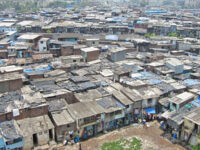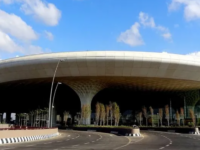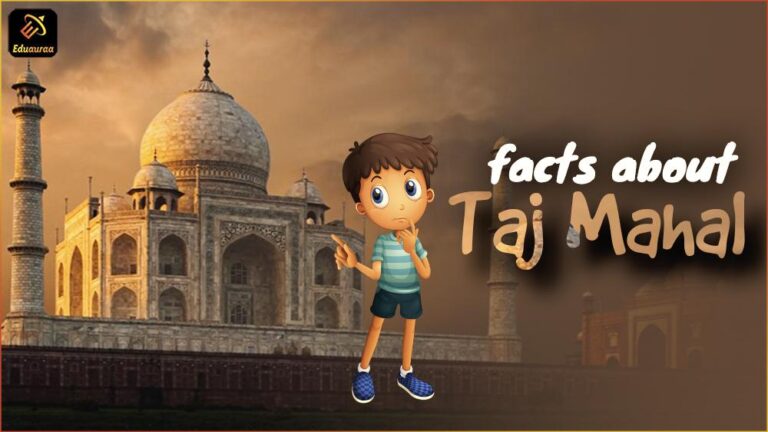Here are 50 fascinating facts about the Taj Mahal, one of the most iconic landmarks in the world:
General Information
- The Taj Mahal is located in Agra, India: It sits on the banks of the Yamuna River, approximately 250 kilometers (160 miles) from Delhi.
- It was built by Emperor Shah Jahan: The Taj Mahal was commissioned by Shah Jahan in memory of his beloved wife, Mumtaz Mahal, who died during childbirth in 1631.
- Construction began in 1632: The main mausoleum was completed in 1643, but the entire complex took about 22 years to finish, with the final touches completed in 1653.
- The Taj Mahal is a UNESCO World Heritage Site: It was declared a World Heritage Site in 1983 for its cultural and architectural significance.
- The Taj Mahal is made of white marble: It is renowned for its use of pristine white marble, which was sourced from Makrana, Rajasthan.
- It is an architectural masterpiece: The Taj Mahal is an excellent example of Mughal architecture, which combines elements from Persian, Ottoman Turkish, and Indian architectural styles.
- It is a symbol of love: The Taj Mahal is often referred to as a “symbol of eternal love” because it was built as a tribute to the love between Shah Jahan and Mumtaz Mahal.
- The Taj Mahal is a mausoleum: It houses the tomb of Mumtaz Mahal, and later Shah Jahan himself, who was buried next to her.
- The monument is surrounded by a large garden: The Taj Mahal’s lush, symmetrical garden is designed in the Persian style, with fountains and reflecting pools.
- It is an iconic white marble dome: The central dome rises to about 35 meters (115 feet) and is surrounded by four smaller domes.
Architecture and Design
- The Taj Mahal’s central dome is 35 meters high: The dome is surrounded by four smaller minarets, each standing 40 meters (130 feet) tall.
- The Taj Mahal’s marble is inlaid with precious stones: The walls of the Taj Mahal are decorated with intricate carvings and inlaid with semi-precious stones, such as jade, turquoise, lapis lazuli, and diamonds.
- The Taj Mahal’s design is symmetrical: Every element of the Taj Mahal, from the garden to the layout of the surrounding buildings, is symmetrical and designed with perfect harmony.
- The building is built on a raised platform: The Taj Mahal sits on a large square platform with four grand minarets at each corner.
- The minarets lean slightly outward: The four minarets at the corners of the Taj Mahal are designed to lean slightly outward to prevent them from falling onto the main structure in the event of an earthquake.
- The dome is made of white marble: The white marble is translucent and gives the monument its glowing appearance, especially during sunrise and sunset.
- The Taj Mahal’s main entrance is a massive red sandstone gate: This entrance is designed with intricate calligraphy and floral motifs.
- The Taj Mahal’s marble reflects different colors at different times of the day: The monument appears to change color, from soft pink in the morning to bright white during the day and golden at night.
- The tombs inside the Taj Mahal are false tombs: The actual graves of Shah Jahan and Mumtaz Mahal are located in a chamber below the main mausoleum.
- The Taj Mahal complex includes several buildings: These include the mosque, a guest house, the main tomb, and the surrounding gardens.
Construction and Materials
- The Taj Mahal took over 20,000 workers to build: This includes masons, marble workers, calligraphers, painters, and architects.
- More than 1,000 elephants were used in the construction: Elephants were used to transport the massive blocks of marble and other materials.
- The marble used is from Makrana, Rajasthan: The high-quality white marble was sourced from a quarry in Rajasthan and transported to Agra.
- The Taj Mahal took approximately 22 years to complete: Though the main tomb was completed in 1643, the rest of the complex took several more years to finish.
- It is said that Shah Jahan wanted to build a “Black Taj Mahal”: He supposedly intended to build a replica of the Taj Mahal in black marble across the river as his own tomb, but this never came to fruition.
- The Taj Mahal’s construction cost was around 32 million rupees: At the time, this was an enormous sum of money, equivalent to over $1 billion in today’s terms.
- Skilled artisans and craftsmen were brought from all over the empire: Artists, engineers, and workers were gathered from regions as far as Persia and Central Asia to work on the Taj Mahal.
- The Taj Mahal was constructed using advanced techniques: Innovative techniques, like the use of geometric precision in the inlay work, were used to create the fine detailing.
- It features intricate marble inlay work known as Pietra Dura: The Taj Mahal’s surface is adorned with colorful inlay designs of flowers and geometric patterns using precious and semi-precious stones.
- The white marble used for the Taj Mahal is self-cleaning: The marble’s natural composition helps in keeping it clean and radiant.
Cultural and Historical Significance
- The Taj Mahal has inspired numerous replicas: Its design and beauty have inspired copies and replicas around the world, including in the USA, UK, and China.
- The Taj Mahal is often considered one of the New Seven Wonders of the World: It was included in the list in 2007 after a global poll by the New7Wonders Foundation.
- The Taj Mahal was threatened by pollution: Air and water pollution in Agra posed a significant risk to the monument’s preservation, but the government has made efforts to protect it, including restricting industrial activity near the site.
- The Taj Mahal has been featured in countless films and art: It is one of the most recognized monuments globally and has been featured in art, literature, and cinema.
- It is one of the most photographed monuments in the world: Due to its beauty, the Taj Mahal is one of the most photographed landmarks on Earth.
- It is a symbol of the Mughal Empire: The Taj Mahal represents the peak of Mughal architectural achievement and is an embodiment of the empire’s grandeur.
- The Taj Mahal was built in an Islamic architectural style: Its design incorporates Islamic, Persian, Ottoman Turkish, and Indian architectural styles.
- The Taj Mahal is a UNESCO World Heritage Site: It is considered one of the most significant monuments in the world and is protected under the World Heritage program.
- The Taj Mahal is sometimes called the “Crown of Palaces”: This is a translation of its name in Persian, “Taj-i-Mahal.”
- It is a popular tourist destination: Millions of people visit the Taj Mahal each year, making it one of the most visited tourist attractions in the world.
Fun and Lesser-Known Facts
- The Taj Mahal is illuminated by the moon: The monument glows in the moonlight, making it even more magical at night.
- The Taj Mahal’s main entrance has inscriptions from the Quran: The calligraphy on the entrance gate includes verses from the Quran written in beautiful Arabic script.
- The Taj Mahal is surrounded by a large garden: The Mughal garden represents paradise, with symmetrical pathways, fountains, and reflecting pools.
- The Taj Mahal’s dome is a symbol of heaven: The dome represents the heavenly abode of Mumtaz Mahal, while the symmetrical layout of the garden reflects paradise.
- The Taj Mahal is built on a raised platform: The monument sits on a platform that elevates it from the rest of the complex.
- The Taj Mahal was nearly destroyed during the Indian Rebellion of 1857: British soldiers considered destroying it, but it was spared due to its cultural significance.
- The Taj Mahal is often called the “Jewel of Muslim Art”: It is widely regarded as one of the best examples of Islamic art and architecture.
- The Taj Mahal’s minarets are slightly tilted outward: This is an intentional design feature, ensuring that in the event of an earthquake, the minarets would fall away from the main building.
- The Taj Mahal is a symbol of India’s rich cultural heritage: It is a testament to the artistic and architectural achievements of the Mughal era.
- The Taj Mahal was once painted in colors: Originally, parts of the Taj Mahal were painted in vibrant colors, but over time the colors faded, and it is now appreciated for its elegant white marble design.
The Taj Mahal remains a universal symbol of love and one of the most extraordinary architectural wonders ever created. Its beauty, history, and significance continue to inspire people around the world.






















0 Comments